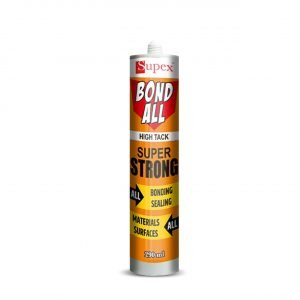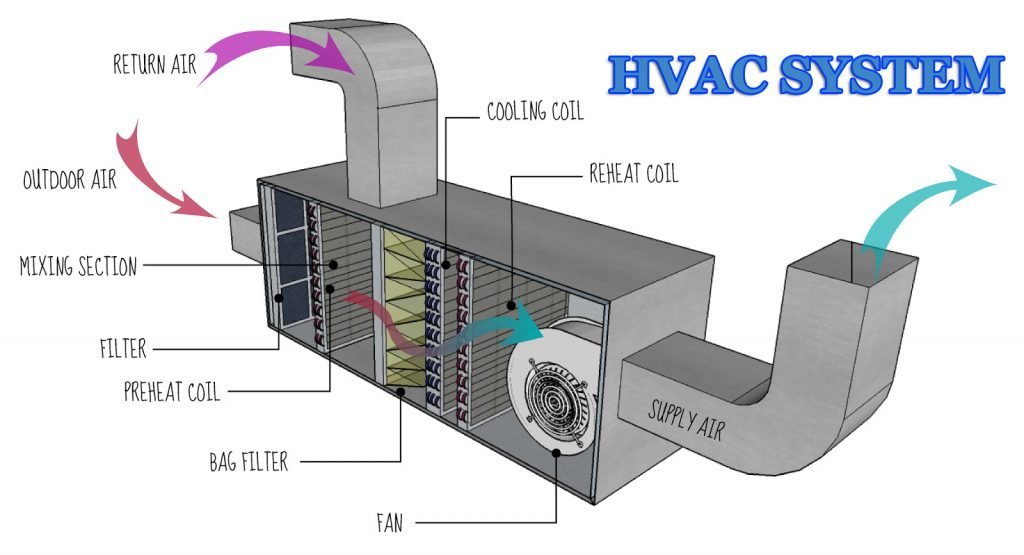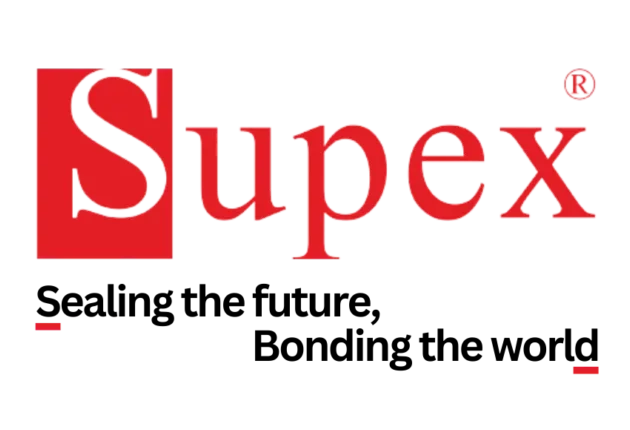Industrial adhesives and sealants is being widely used to improve quality, reliability, reduce costs while joining or sealing assemblies, joints. In this article we are discussing about how it can be useful for HVAC Industry.
- What is HVAC
- Why HVAC Adhesives Sealants are required
- Applications & products
What is HVAC and how does it work?
Heating, Ventilation, and Air Conditioning. This is used to provide heating and cooling services to buildings. HVAC has become the required industry standard for construction of new buildings.
How many types of HVAC are there?
There are four main types of HVAC systems. There are split systems, hybrid systems, duct-free systems, and packaged heating and air systems. Each of these units have pro’s and con’s, and knowing these factors can help you decide which is best for you.
What are the main components of a HVAC system?
- Heat Exchanger. …
- Blower Motor. …
- Combustion Chamber. …
- Condenser Coil or Compressor. …
- Evaporator Coil. …
- Thermostat
What is the purpose of HVAC system?
A Heating, Ventilation and Air Conditioning package, also known as HVAC system, removes contaminants in the air and conditions indoor air either cooling it or heating it to provide comfort. Air contains many pollutants. If you let it in to your home without purifying it, you or your family might end up getting sick.
Why Industrial Adhesives and Sealants are required?
Furthar these engineering components are assembled, fabricated into packaged units and connected to complicated ducting systems. These ducts finally terminate as grills etc hanging from pipes or fixed onto walls/ false ceilings.
Efficiency of HVAC system largely depends upon how this air is sealed or that there are no air leakage losses. Air leakage loss implies more work for the engineering components – more energy consumption , more wear & tear.
Industrial adhesives and sealants
Request a Consultation
Mobile/ Whatsapp: +91 9699892782, Email: sales@supex.in
Click HereApplications and Products – HVAC adhesives sealants
Commercial and residential HVAC system require proven sealing, bonding and noise deadening systems. Manufacturers HVAC adhesives sealant technologies to bond, seal and soundproof metal bodies and frames in filter systems with EHS friendly and certified solutions, achieving thus cost-optimization and long-term results.
Structural Adhesives
Bond and seal metal bodies and to secure stiffeners on thin metal sheets, while providing a structural, weatherproof and vibration damping joint that can be over-painted.
ADVANTAGES
- Safe and long-term durable joints, Simplified assembly instead of mechanical fixtures.
- Material savings due to the potential use of thinner metal sheets.
- No corrosion caused by screw holes and rivets.
- Damping of vibrations and noise
MS Polymer Adhesives
 MS Polymer adhesive & sealant is Low odor, ageing and weathering resistant, bonds well to a wide variety of substrates without the need for special pre-treatments. It is suitable for interior and exterior elastic sealing and bonding applications on substrates such as timber, glass, metals, metal primers, ceramic materials and plastics.
MS Polymer adhesive & sealant is Low odor, ageing and weathering resistant, bonds well to a wide variety of substrates without the need for special pre-treatments. It is suitable for interior and exterior elastic sealing and bonding applications on substrates such as timber, glass, metals, metal primers, ceramic materials and plastics.
TYPICAL APPLICATION AREAS:
- General machinery, body and frame sealing and bonding
- Hygiene, ventilation and air conditioning systems
- Store refrigerators and refrigerating rooms and trucks
- Food processing and packaging machinery
- Sealing and bonding in recreational vehicles
Duct Sealant
Polyurethane Sealants
design for industrial application. It can be painted. It forms a highly elastic, tear and weather resistant joint. It adheres without primer on substrates commonly used like wood, anodized aluminum, polyester, glass, concrete, baked clay, stone, ceramic tiles. Applications :
- HVAC cabinet
- Truck and trailer sealing
- Adhesive for roof bows of truck and trailer
- Refrigerated counter
Polyurethane Foam Spray Gap Fill Sealants
Supex 100 PU foam spray sealants are used to fill large gaps. The HVAC systems that make a home comfortable create penetrations (openings) that can create drafts, making living spaces uncomfortable. These penetrations not only allow air to seep into and out of the home, but they also may be forcing equipments to work harder than they need to.
Where to buy industrial adhesives and sealants?
Supex’ products are available across India through our distributor network. You can call / Whatsapp / SMS +91 9699892782 for quick response, best price and technical support.
Sealing Ducts: What’s Better, Tape or sealant?
Most duct systems have numerous leaks that waste energy and lead to room-to-room pressure imbalances.
All about sealants
Most energy-conscious architects seal duct joints with acrylic sealants. It is a water based sealant . Duct joints should always be secured with sheet-metal screws before seams are sealed with mastic.
All about duct tape
Since common hardware-store duct tape — technically known as cloth-backed rubber-adhesive duct tape — fails quickly when used on ducts, most energy-conscious contractors seal duct joints with a sealant. Although Sealants works well on galvanized steel ductwork, it has its disadvantages: it is a little messy to apply.
Difference between acrylic sealant and silicone sealant
It’s important to know the differences between silicone and acrylic sealants, as well as their advantages. With all the information in front of you, you’ll be able to compare these two sealant types to one another before deciding on the one to use for your project.
One advantage acrylic sealant has over silicone sealant is paintability. Most paints can be used on acrylic sealants, which is not the case with silicone sealants. However, if the sealant is for your ductwork, there’s no real need for paint. Disadvantage of silicone is that it produces an unpleasant vinegar odour during curing, but there are also some odorless silicone options, however at higher cost.
Advantage of silicone sealants are more flexible and longer lasting than acrylic, and they do not have a volume shrinkage. Acrylic sealants have a major disadvantage in that they are water permeable. It’s advised that you not use acrylic in damp or humid places due to the risk of fungus / mould growth.



2 thoughts on “HVAC Adhesives & Sealants in India”
this really is very impressive
Great article to read, all the tips are great….